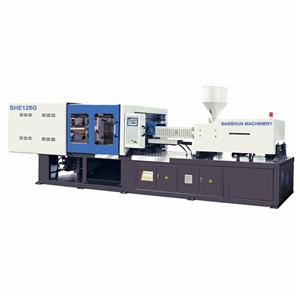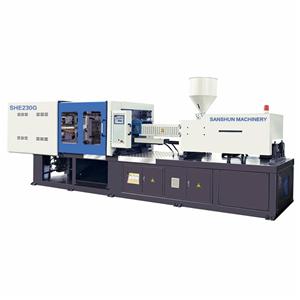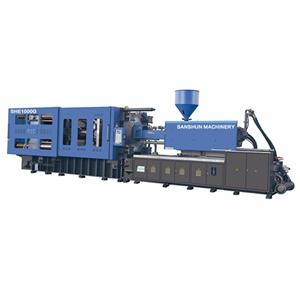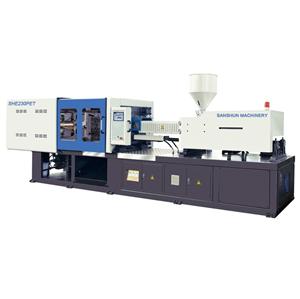- Home
- >
- News & Resources
- >
- Our Blog
- >
- "Technological skills for shrinkage of thick-walled injection parts
The shrinkage problems of plastic parts (surface shrinkage and internal shrinkage) are all defects caused by insufficient melt glue replenishment when the thicker parts are cooled.
We often encounter situations that increase the pressure, increase the water inlet, extend the injection time, and the shrinkage problem cannot be solved. Among the commonly used raw materials, the shrinkage problem of the PC material is the most difficult to solve due to the fast cooling rate, and the shrinkage and shrinkage problems of the PP material are also more difficult to handle.
Therefore, when encountering serious shrinkage problems of thick and large pieces, it is necessary to take some unconventional injection molding techniques, otherwise it will be difficult to solve the problem.
In practical production, we explored a set of more effective techniques to deal with this difficult problem of injection molding.
On the premise of ensuring that the injection molded part does not deform when it is ejected, take the method of shortening the cooling time as much as possible to allow the injection molded part to exit the mold early at high temperature. At this time, the temperature of the outer layer of the injection molded part is still very high, and the skin is not too hardened, so the temperature difference between the inside and the outside is relatively small, which is conducive to the overall shrinkage, thereby reducing the concentrated shrinkage inside the injection molded part. Because the overall shrinkage of the injection molded part is constant, the more the overall shrinkage, the smaller the concentrated shrinkage, and the degree of internal shrinkage and surface shrinkage can be reduced.
The problem of shrinkage is due to the heating of the mold surface and the decrease in cooling capacity. The surface of the injection-molded part that has just solidified is still soft (unlike the surface of a PC part, which is harder and is prone to shrinkage), and the interior is not completely eliminated. Due to the formation of a vacuum in the shrinkage hole, the surface of the injection molded part is compressed inward under the pressure of the atmospheric pressure, and at the same time the shrinkage force is added, so the problem of shrinkage occurs. In addition, the slower the surface hardening speed, the more likely it is to cause shrinkage, such as PP, and vice versa.
Therefore, after the injection-molded part is ejected early, it should be properly cooled to maintain a certain hardness on the surface of the injection-molded part, so that it is not prone to shrinkage.
However, if the shrinkage problem is more serious and moderate cooling cannot be eliminated, it is necessary to adopt the method of chilling with frozen water to rapidly harden the surface of the injection molded part to prevent shrinkage, but internal shrinkage holes will still exist. Due to the effect of vacuum and shrinkage, the surface of softer materials such as PP may have dents, but the degree of dents has been greatly reduced.
While taking the above measures, if the method of extending the injection time instead of the cooling time is used, the improvement of the surface shrinkage or even the internal shrinkage will be better.
When solving the shrinkage problem, the shrinkage degree will be increased because the mold temperature is too low. Therefore, it is best to cool the mold with machine water, do not use frozen water, and increase the mold temperature if necessary. When the temperature rises to 100 degrees, the effect of improving shrinkage will be better. However, if it is to solve the problem of shrinkage, the mold temperature cannot be raised, but it needs to be lowered.
Finally, sometimes the above method may not completely solve the problem, but it has been greatly improved. If the problem of surface shrinkage must be completely solved, adding an appropriate amount of anti-shrinking agent is also a last resort. Of course, transparent pieces cannot do this.
If there are still shrink marks on the surface of thick-walled parts, or if plastic parts such as partial walls are encountered, the introduction of gas-assisted injection molding will be solved.
Gas-assisted injection molding is a plastic molding technology that introduces high-pressure gas into the thick-walled part of the part, generates a hollow section inside the injection part, completes the filling process, achieves gas hold-up, and eliminates product shrinkage. The traditional injection molding process cannot combine thick and thin walls to form a mold, and the residual stress of the part is large, it is easy to warp and deform, and there are shrink marks on the surface. Gas-assisted technology successfully produces thick-walled and partial-walled products by hollowing out the thick-walled interior, and the product has excellent appearance and surface properties and low internal stress. Lightweight and high strength.
The structure and mold design of gas-assisted products include pouring system, air inlet method and airway distribution design technology, gas-assisted injection molding process design technology, gas-assisted injection molding process design technology, computer-assisted injection molding process computer simulation technology, gas-assisted injection molding product defect diagnosis and elimination Technology, gas-assisted process special material technology.
TV sets, home appliances, automobiles, furniture, daily necessities, office supplies, toys, etc. have opened up completely new application fields for plastic molding. Gas-assisted injection molding technology is particularly suitable for pipe-shaped products, thick walls, partial walls (manufactured by different thickness sections) Pieces) and large flat structural parts.
Gas auxiliary device: Including nitrogen generating and supercharging system, pressure control unit and intake element. The gas-assisted process can be fully integrated with the traditional injection molding process (injection molding machine).
Gas-assisted injection molding can reduce the weight of the product (material saving) by up to 40%, shorten the molding cycle (saving time by 30%, eliminate shrinkage marks, improve the yield rate; reduce the injection pressure by 60%, and use small tonnage injection molding machines to produce large parts. Reduce operating costs; longer mold life, lower manufacturing costs, and more robust structures such as thick roots, thick tendons, and connecting plates, increasing the freedom of mold design."







